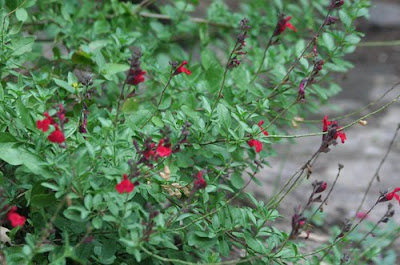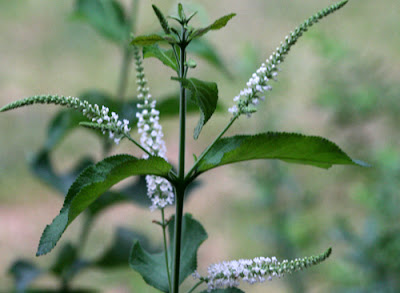There are other plants around the garden that are looking bad as well. Another viburnum, the "snowball" that finally bloomed for the first time this spring, has lost some branches already. Sigh.
When plants are under stress, they attract insect pests, so one might expect that the insects would be having a field day in my garden just now, but this really hasn't been the case. My theory is that a couple of consecutive cold winters have knocked them back a bit, and perhaps the drought has affected them as well. For whatever reason, I really haven't noticed that many insect problems in the garden so far. Knock wood.
I haven't even noticed as many butterfly caterpillar "pests" this spring. Of course those pests really don't deserve the name of pest because they turn into butterflies, repaying us with their beauty for any leaves their children may munch.
One exception to the fewer caterpillars observation is the larvae of the Giant Swallowtail butterfly. I have plenty of these "bird dropping" caterpillars, of all sizes, on my little citrus trees.
Here's a somewhat bigger larva on the Meyer lemon. The lemon is about the size of a plum at this point.
In addition to the caterpillars already hatched, there are still plenty of these eggs scattered around on the leaves as well.

With luck, at least some of those eggs and caterpillars will one day morph into one of these magnificent Giant Swallowtails.
I haven't had many Monarch caterpillars or butterflies this year and I haven't seen any of the butterflies in a few weeks now, but the butterfly weed that would be the food for their larvae is under attack from a real pest which, if left undisturbed, will suck the life from the plants.
Yuck! As you can see, this plant has a massive infestation of aphids. It will be a goner if it doesn't get help. But help is on the way! I had noticed several ladybugs in the area recently. Ladybugs dine on aphids, but I tell you what really loves aphids are ladybug larvae and the ladybugs that I saw here have left some of their babies behind. You can even see one of them in profile already on the job at about the center of this picture.
You may find this hard to believe - I find it hard to believe myself - but this is the same plant photographed just 24 hours after the picture above. See any aphids? There may be one or two still left but most of them have been crunched by those ravenous eating machines, the ladybug larvae. You can see two very well fed ones in the picture.
Here is a close-up of another one. These offspring of ladybugs have been described as looking like alligators and it's a pretty apt description, I think. If you find any of these little "alligators" on your plants, don't panic. They are not after you. They are just hunting aphids and unless you are particularly fond of aphids, you should greet them with a smile.
The gardener has many allies in the fight against garden pests. Ladybugs, praying mantises, frogs and toads, anoles and snakes, as well as the birds, all play their roles and are most welcome in my garden. I've seen all of them in a walk through my garden this morning and I'm very glad to know that they are there and are on the job.












































